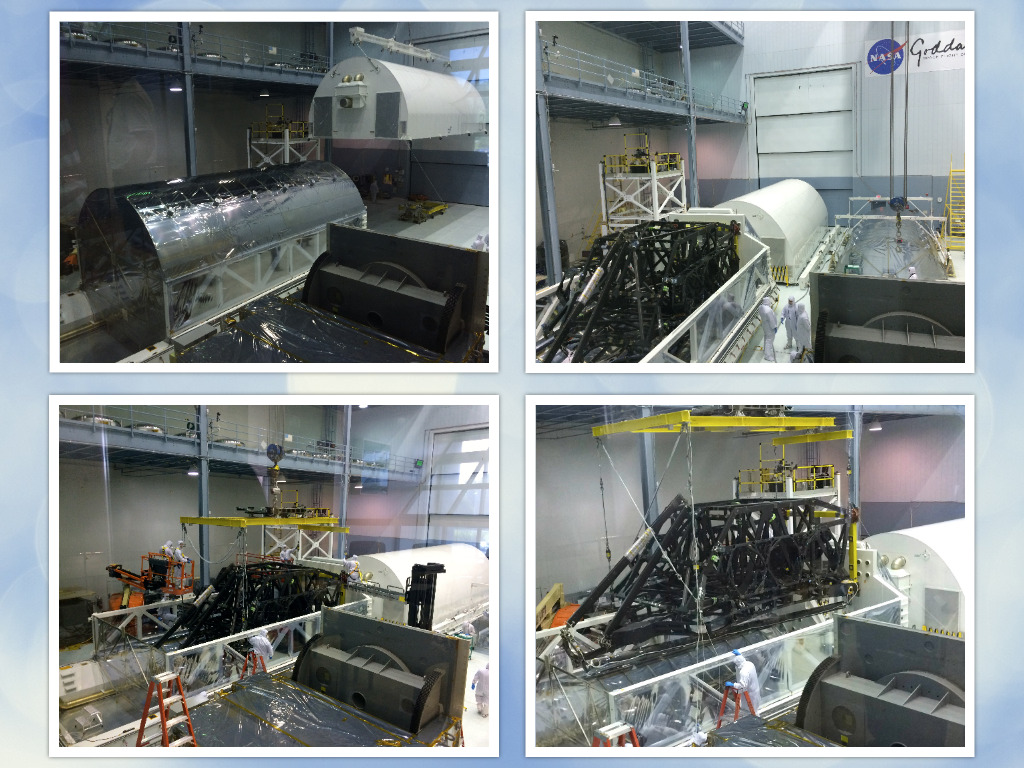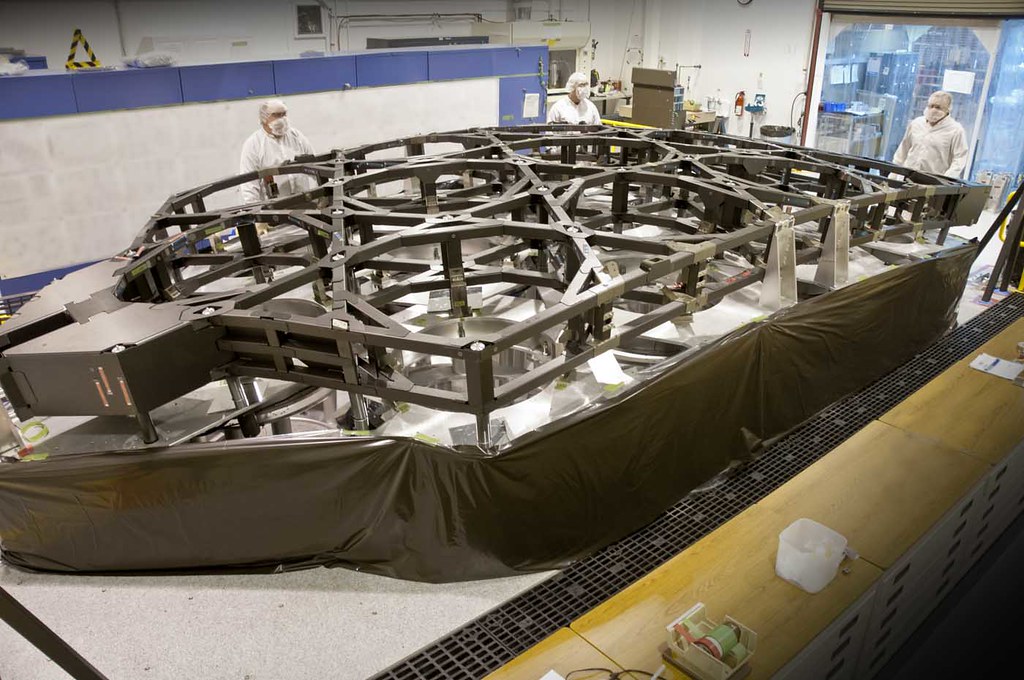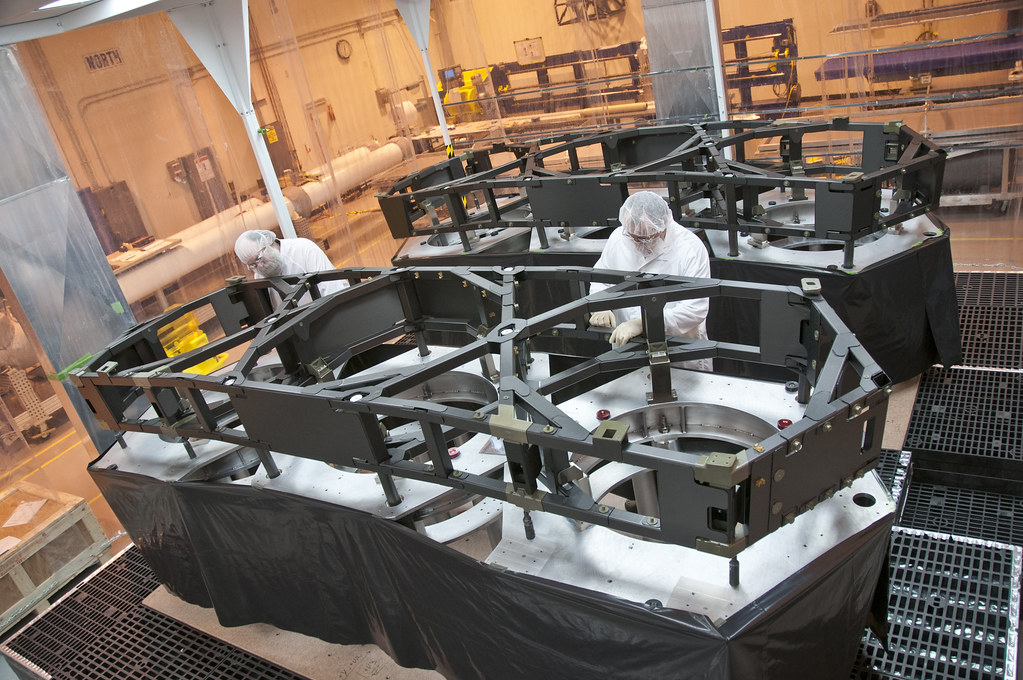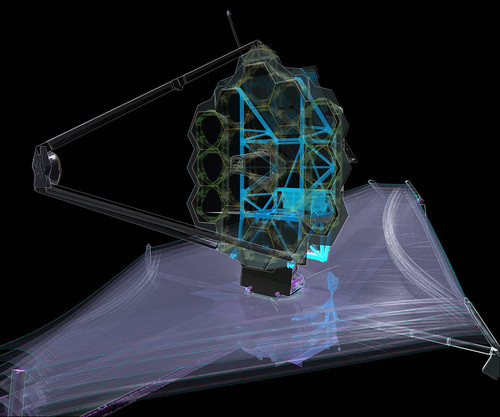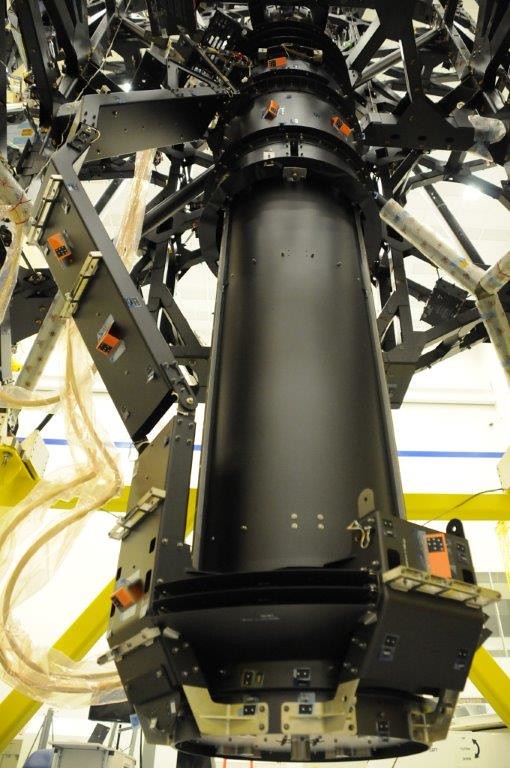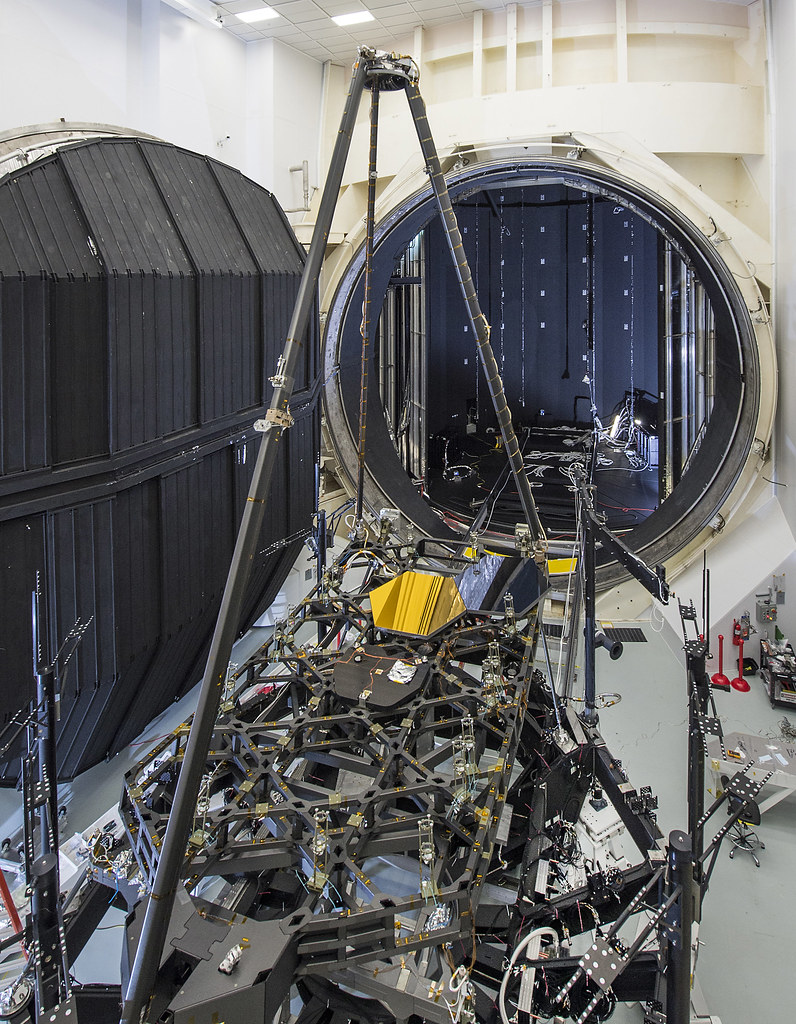The backplane must carry more than 2400kg (2 1/2 tons) of hardware. It is required to be essentially motionless so the mirrors can see far into deep space. To meet this requirement, the backplane was engineered to be steady down to 32 nanometers, which is 1/10,000 the diameter of a human hair!
Webb Innovations
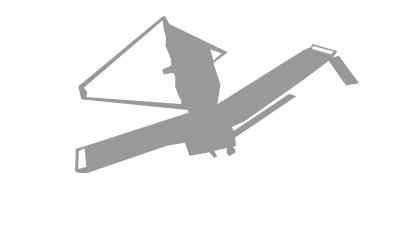

The Backplane

The flight telescope structure (which includes the backplane) at NASA Goddard: Photo: NASA/Chris Gunn
Location
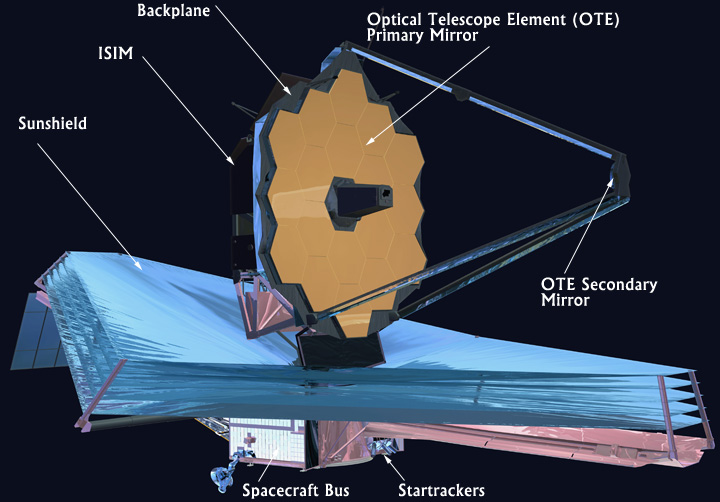
The backplane is the spine of the telescope and is the structure on which the mirrors and instruments are mounted.
The James Webb Space Telescope's backplane is the large structure that holds and supports the big hexagonal mirrors of the telescope. The backplane has an important job as it must carry not only the 6.5 meter (over 21 foot) diameter primary mirror plus other telescope optics but also the entire module of scientific instruments. All told, the backplane carries more than 2400kg (2 1/2 tons) of hardware.
Engineering Challenge
Being the "spine" of the telescope requires it to essentially be motionless so the mirrors can see far into deep space. Imagine holding the handle of a magnifying glass to see a tiny object. If your hand shakes a lot, it will be hard to focus on the object. Just as you would have to hold the magnifying glass handle steady with your hand, the Webb backplane has to hold the telescope mirrors steady, to allow them to focus.
This structure is also designed to provide unprecedented thermal stability performance at temperatures colder than -400°F (-240°C). At these temperatures, the backplane was engineered to be steady down to 32 nanometers, which is 1/10,000 the diameter of a human hair!
Northrop Grumman was responsible for the development of advanced graphite composite materials mated to titanium and invar fittings and interfaces.
The Telescope Structure and Backplane
The backplane arrived at NASA Goddard in August of 2015 - but as more than just the backplane. The backplane is actually part of what we call the "telescope structure" and includes: the backplane; the secondary mirror support structure; the main backplane support fixture (BSF); and the deployable tower structure that lifted the telescope off of the spacecraft. The three arms at the top come together into a ring where the round secondary mirror resides.
The Journey of the Backplane
There are actually two versions of the backplane. Besides the flight version, there is also a test version, called the Pathfinder. It is full-scale, and only missing the two side "wings" that hold three mirrors each, and which fold to each side in launch configuration. The Pathfinder was shipped to NASA Goddard, where the spare secondary mirror, as well as two spare primary mirror segments were mounted to it. This allowed for rehersal of the mirror assembly process. The Pathfinder next went to NASA Johnson, to be cryogenically tested in Chamber A - which is where the assembled flight telescope would eventually follow. The Pathfinder structure and the mirrors were put through a series of tests, which allowed for a full checkout of the equipment and test procedures, in preparation for the flight telescope.
The Pathfinder
The Flight Telescope Structure including flight backplane
Once the full assembly of the telescope was complete (including mirror assembly and integration of the science instruments), and environmental testing was done, the telescope traveled to NASA Johnson for cryogenic testing, just like the Pathfinder went through. After successfully completing crogenic testing there, the telescope was delivered to Northrop Grumman to be mated with the sunshield and spacecraft bus.
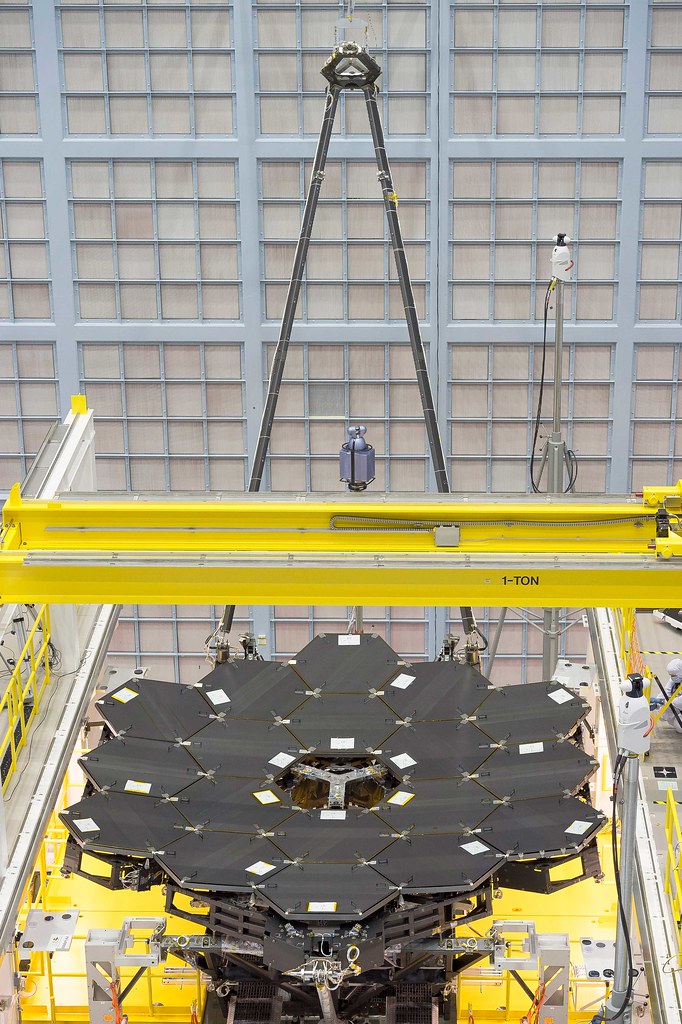
The completed primary mirror on the flight telescope structure at NASA Goddard Space Flight Center. The black covers on the gold-coated mirror segments are temporary to keep the mirror surfaces protected Photo: NASA/Chris Gunn

NASA's James Webb Space Telescope, or Webb, emerged from Chamber A at NASA's Johnson Space Center in Houston on Dec. 1, 2017. The telescope's combined science instruments and optical element exited the massive thermal vacuum testing chamber after about 100 days of cryogenic testing inside it. Photo: NASA/Chris Gunn
Related Video
Behind the Webb video on the Backplane
Behind the Webb video on the Backplane Credit: StSci

